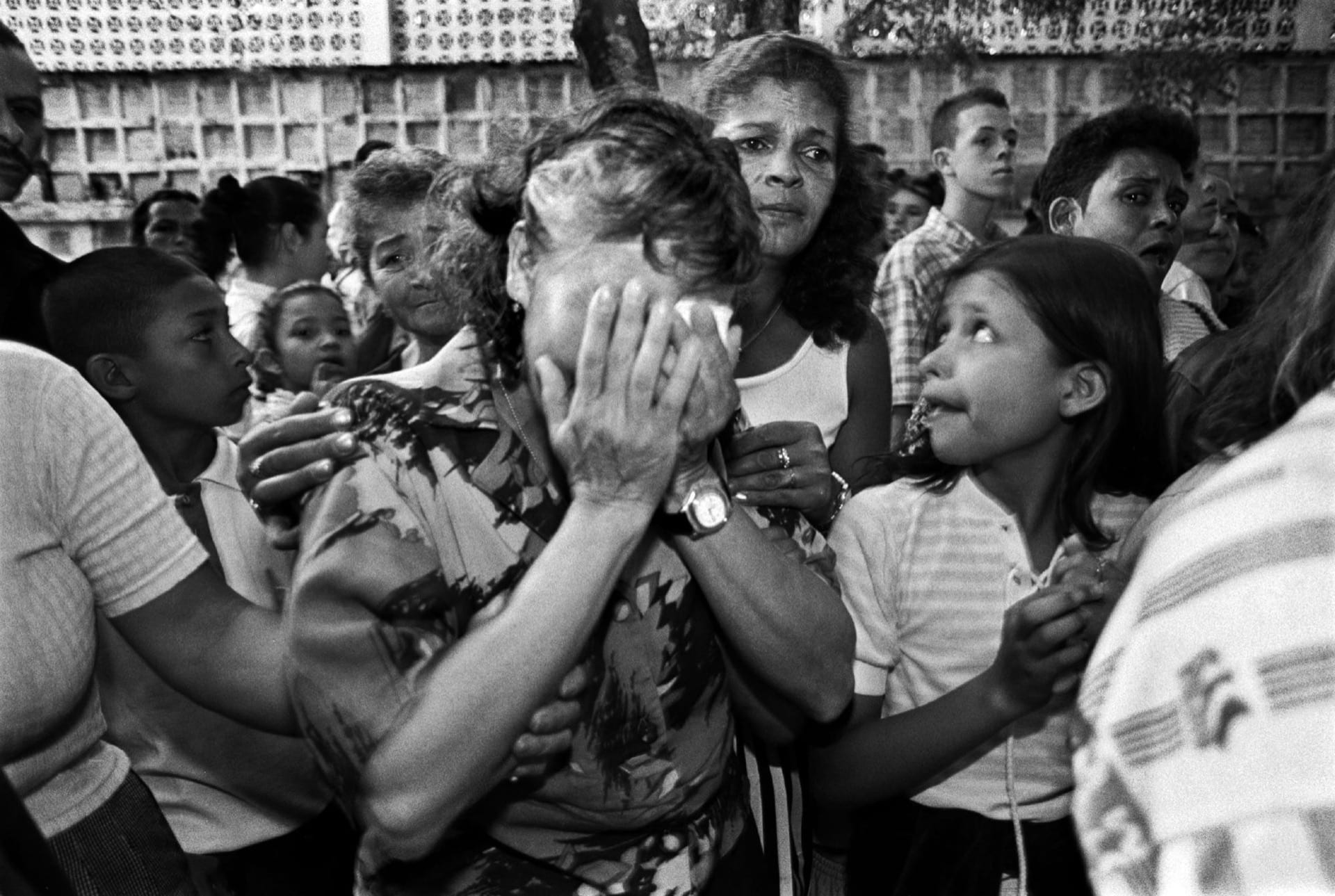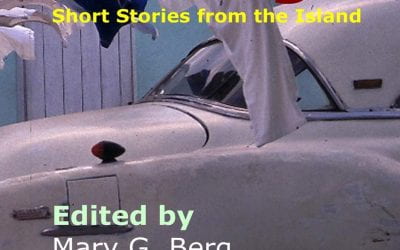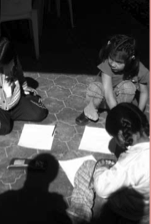Justice For All
Mexican Communities Take Justice Into Their Own Hands
In January, 2007, Mexican president Felipe Calderón ordered the Federal Army to the southwestern state of Guerrero. The order was part of his plan to rein in crime and corruption across the country. Officially, the military was sent to wrest control of communities away from narco-traffickers and corrupt cops. The plan has its skeptics, though, many of whom can be found in the La Montaña region of Guerrero. Sosimo Mendoza, a schoolteacher and leader in his indigenous Tlapaneco community is wary of the army’s presence, and worries about how broad its mandate will be.
It is now three days after troops arrived in busy Acapulco. Sosimo drives his old pickup truck into the quieter, dustier urban center of San Luis Acatlán, in La Montaña, to meet with the other fortyone men and one woman who serve as advisors to the region’s Community Police. Over twelve years, the Community Police has grown from a network of neighborhood watches to what it is now: an extra-legal justice system with its own police force, judicial system, and network of jails. The people present at this meeting with Sosimo represent the fifty-two indigenous communities that coordinate to sustain the Community Police.
The meeting to discuss the army’s arrival is held in the brushed dirt yard of the Community Police’s central office on a sunny Saturday afternoon. In the shade of the yard’s lone tree, plastic chairs face a worn wooden table. Propped up against the tree beside the table is a flipchart outlining the meeting’s agenda. There are administrative details to take care of, but the primary topic on people’s mind is Calderón’s new plan. Like many others here, Sosimo is concerned that the army will use this opportunity to disarm the Community Police. For him, their presence is a provocation.
Calderón has sent the army to Guerrero because he says that crime is out of control. For the people at this meeting, he is 15 years too late. One man at this assembly, taller than Sosimo, and more dour, asks rhetorically, “where was the Army when we needed them? Why are they coming now, after we have gotten crime under control?” These are many of the same men who took part in the formation of the Community Police in 1995, when the problem of crime loomed large in their region.
The small towns of La Montaña were isolated back then. The under-staffed municipal and state police forces patrolled only the bigger towns, leaving the remote pueblos unguarded from criminals. Bandits would regularly coordinate roadblocks on the major arteries of the region, where hijackers could systematically rob lines of halted vehicles. The process often involved physical and sexual assault. Lawlessness had also crept into the indigenous villages; rape and murder were not uncommon in this now quiet corner of Guerrero.
After one particularly grotesque assault, leaders from the victim’s community contacted representatives from the surrounding villages, calling for a regional assembly to address the endemic violence.
Over the course of several meetings a majority of participants grew to believe that crime in La Montaña required a systemic, sustainable response. Regional organization of this sort pushed the limits of the law. The Mexican Constitution permits individual indigenous communities to govern themselves through their own “norms and traditions,” but there is no such protection for regional organization.
Regardless, the proposal for the regional Community Police emerged. Each town elected a handful of volunteer police officers to patrol the communities and major roads, arrest delinquents and turn them over to state officials. The local municipal government of San Luis Acatlán endorsed this new initiative, providing the group with 20 rifles.
An hour into the meeting, the moderator has completed the day’s administrative duties: he’s welcomed the crowd, taken attendance, and set the agenda. The moderator sits down, and an advisor to the Community Police stands to introduce the topic of the army’s recent arrival.
A community member reports rumors that President Calderón has a list of 300 individuals who are considered threats to state authority. The leaders of the community police wonder if they are on the list. This would not be the first time they have been targeted.
Tension between state authorities and the Community Police first arose in 1998. After three years of arresting criminals and turning them over to state officials, the Community Police grew frustrated watching offenders get quickly released back into their communities. It had become apparent that the problem went beyond policing: the state’s entire system of justice did not adequately meet their security needs.
In 1998, the communities established an independent judicial and penal system. They nominated a six-person committee from among the Comisarios, to hear cases, render judgments, and enforce sentences. But while the state was willing to accept and even encourage the communities’ policing efforts, the parallel courts were viewed as a more direct threat to its authority.
Rising tensions came to a head when, in 2001, state authorities arrested several members of the Community Police for deprivation of liberty of its inmates. This action was paired with an ultimatum: disarm yourselves or the Mexican army will disarm you. Protective of their newfound security, five thousand community members marched in protest. The state was forced to back off and the two systems have co-existed ever since.
“What if the army tries to disarm us again?” one man asks. In the meandering flow of the meeting, the next speaker’s comment ranges far from the matter at hand, only to find his way back minutes later, and at last respond to the question asked. “Then we’ll organize another march,” he suggests. The meeting continues like this, with the moderator calling on people to contribute, and each one taking the opportunity to speak at length. No one is interrupted. Mirroring the general assemblies that are regularly held in the towns, everyone at this meeting will talk. Inclusion and consensus of meeting participants are cultural tenets in the region’s indigenous communities.
When the next speaker picks up the thread of conversation, he says he isn’t sure that a march is their best strategy: “I don’t think we would get the same turn-out as we did before.” There is agreement on this point—the people of La Montaña are less inclined to dedicate scarce resources to the Community Police than they were in 2001.
This is the paradox of this organization. While the security situation has deteriorated in almost every other part of Guerrero, La Montaña has become an oasis of peace. There are no good crime data for the region, but the number that is batted around is 95%, as in a 95% drop in crime in La Montaña since 1995. Why has the Community Police been so successful? Perhaps because they constructed a system built specifically to prevent corruption and ensure accountability. Human rights advocate Abel Barrera argues, “In the state courts, power is concentrated in a single judge,” meaning that one only has to bribe a single person, and detecting this corruption can be difficult.
By contrast, the judicial arm of the Community Police is made up of a six-person panel, ensuring that no one person is so powerful that his corruption would alter outcomes. Furthermore, Comisarios serve only one year to limit their ability to develop a moneymaking network.
If they were to get corrupted, they would most likely get punished.
Most jail-time, though, is not spent in jail. Prisoners spend their days working in the communities on public projects. Community Police adviser Valentín Hernandez explains: “We will put the detainees to work so that they can mend the harm that they did to the community and … give them an opportunity to reevaluate their errors so that at some point they can return to their community.” A murderer may deserve to spend his life in prison, but that lifetime of work does not help the victim’s wife take care of her now fatherless children, nor the murderer’s children who will suffer now, too. This is why they give high priority to the wishes of the victim’s family, which often include some jail time followed by release conditioned on monthly payments to the victim’s family. The judges are, above all, aware of the interdependence of community members.
Certainty of punishment is another central tenet of the Community Police. As with any justice system, though, trade-offs are made between a zeal to punish the guilty and a desire to protect the innocent. It is worrying that there is no formal means of appeal; once a case has been adjudicated it is rarely revisited. In a system where the judges, family members and communities have the last word, outsiders and orphans are at a distinct disadvantage.
The sun has moved across the sky, marking four hours of uninterrupted discussion. The attendees gradually reposition their chairs to follow the limited shade and keep within earshot of one another. By the end of the meeting, five points of action are outlined on the flipchart to address the army’s arrival: 1) Inform community members; 2) Work with other organizations to strengthen regional support; 3) Write a letter to the Municipal President asking him to request the withdrawal of the army; 4) Formally denounce any human rights abuses; and 5) Write a letter to the Secretary of Defense arguing that narco-trafficking cannot be used as a pretext for shutting down the Community Police.
These five steps provide a window into the Community Police’s perception of their own legitimacy. Steps one and two illustrate that, as one community argues, “the Community Police’s legitimacy is from the people.” Steps three, four, and five draw on another important source of legitimacy: domestic and international rights and the Mexican government’s responsibility to protect those rights.
The list of international laws and covenants the Community Police uses to defend itself is extensive, and most of the leadership can refer to these treaties by name. While the organization formed in response to an immediate need with no thought to rights ratified in any United Nations charter, it has learned to employ rights language to justify its continued existence to an external audience.
The sun has chased these forty-two men and one woman at the meeting to the far end of the courtyard. Most traveled to the meeting on public transportation, which is to say that they rode in the back of a pickup, and soon the last pickups will be heading back to their communities. The front yard of the Community Police headquarters clears out two or three at a time, and by the end only the three Comisarios and two officers on duty are left. They clear the yard of its benches and walk over to the open-air kitchen where hot tortillas and beans will be served up for dinner.
A few days before the meeting, Sosimo sat in his living room holding a copy of the Community Police bylaws in one hand, the state constitution in the other. When asked how the Community Police would respond if the state were to improve its justice system and provide proper security, Sosimo says, “We would leave our arms… and would shift focus to something else.”
The Community Police of La Montaña is just one example of the trend towards non-state justice systems in poor countries. Cases span the globe of marginalized communities policing themselves when the state does not adequately perform this function. It is a diverse group ranging from community watch organizations that dabble in vigilante justice to formalized, state-sanctioned conflict mediation groups that enforce traditional rather than state law.
Informal policing has clear benefits—above all that it provides protection for the poor in an otherwise insecure world. It can also be more cost-effective than state-led policing and its resolution of conflicts can be more appropriate for traditional communities. Informal policing is, at heart, a democratic endeavor: it is citizens participating in public structures for the social good.
Still, there are worries about informal policing, particularly with regard to maintaining human rights standards. If these police forces are only accountable to their own communities, where traditional power structures may be unbalanced, then marginalized individuals and groups within the community lose their ability to leverage outside support to ensure that their rights are protected.
The wide variety of informal justice systems makes it difficult to establish criteria for evaluating that individual systems that are appropriate for all cases. For many scholars, that’s the rub: if you accept that at least some non-state actors can use force legitimately, then the new challenge is to define what characteristics a group must have to gain legitimacy.
Within the literature, no other example exists of a community-built system that reaches all the way from community patrol through sentencing and on to punishment through incarceration. Nor are other documented groups as determined to take on all cases within their territory.
Among the many non-state justice systems, the Community Police is a particularly good candidate for recognition as a legitimate organization. It is a force that, in the face of serious shortcomings of the state, is embraced by community members, is highly participatory, has cut crime, has formalized its structure, and recognizes international human rights standards.
San Luis’s Municipal Security Chief says cryptically of the Community Police, “Our relationship is one of total respect and coordination, even though they are outside of the law.” This tight-wire act is tough to sustain, but until the Mexican government finds a way to effectively address the needs of La Montaña, it will be forced to live with this gap between its words and its actions.
In the meantime, the Community Police will remain focused on the tie that binds the two systems together. “We have the same enemy,” Sosimo says, “which is crime.” And while the government sorts out its position, Sosimo is sure that the Community Police will continue as it has: “This is what our fathers and grandfathers taught us—to impart justice.”
Epilogue: One year later, tensions remain high between the Community Police and state authorities. While the army has not attempted to disarm the group, a Comisario was recently arrested (and then released) by the municipal Judicial Police.
The authors would like to thank the generous people of La Montaña, and particularly the representatives of the Community Police, who offered unfettered access to all parts of their operation. They not only shared their time and experience, but also inspired us with their deep commitment to public service.
The authors would also like to thank their advisor, Professor Chris Stone, both of whom helped us deepen our understanding of the Community Police and without whom this project would not have been possible.
Winter 2008, Volume VII, Number 2
Ann Gurucharri and Tony Saudek, from January 8-24, 2007, traveled to the La Montaña region of Guerrero, Mexico, along with research partner Nik Steinberg, to conduct field research on the Community Police. The trip was generously sponsored by the Mexico Program at Harvard University’s Kennedy School of Government, in collaboration with the Escuela de Graduados en Administración Pública (EGAP) of the Tecnológico de Monterrey. Over the two weeks, the three traveled to several of the communities involved in the project and interviewed over 30 people associated with the Community Police, including Community Police officials and police officers; community members; prisoners; state and local governmental authorities; and local human rights workers.
Related Articles
Salvadoran Youth, Transnationalism’s Other Product
English + Español
A completely distraught junior high school teacher in the Washington DC area approached her assistant principal—a highly-educated white middle-class man—one morning for urgent…
Cuba on the Edge: Short Stories from the Island
If you want to read contemporary Cuban fiction and do not have access to the Spanish original, an increasing number of excellent translations will now allow you to become acquainted with…
Making A Difference: Literacy in Calca
Seated on the floor of their school house twenty attentive first grade eyes watch as Martha turns the pages and asks aloud about the fate of David a friendly llama…





